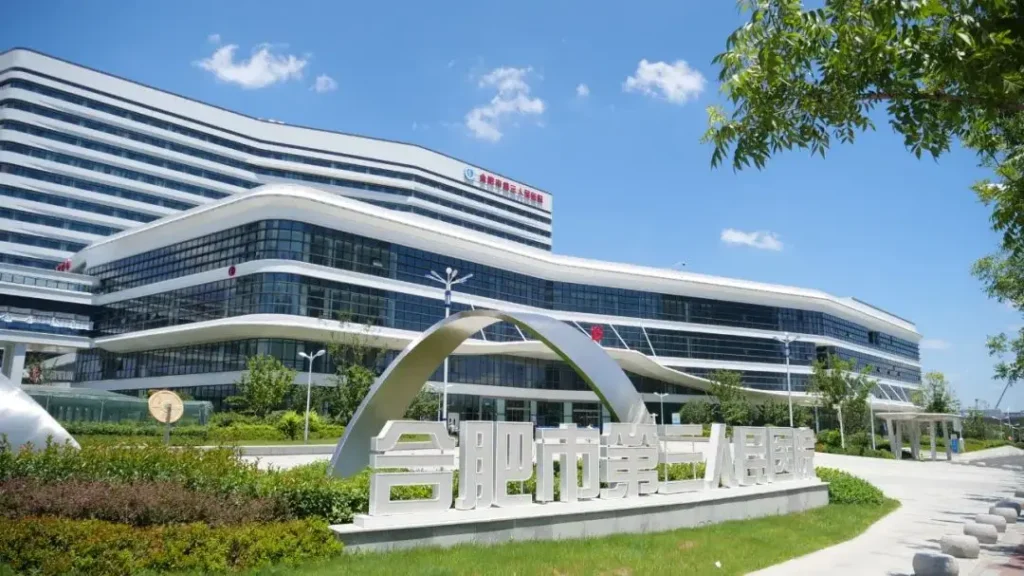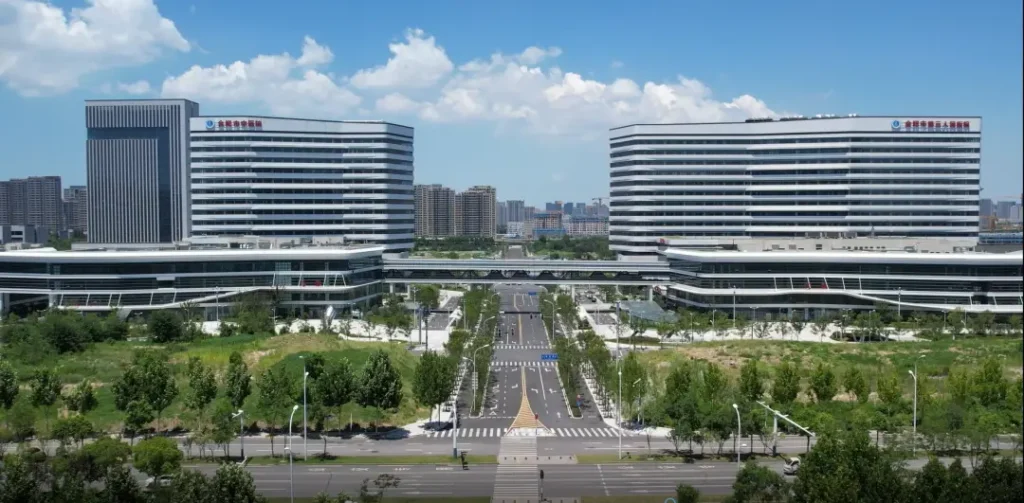Hefei Third People’s Hospital was established in 1978. In 1994, the hospital officially merged with Wanzhong Hospital and Wanxi Hospital. Through the relentless efforts of generations of staff, it has developed into a tertiary comprehensive hospital integrating prevention, medical treatment, teaching, research, rehabilitation, emergency care, and community services. It is also a specialized occupational disease prevention and treatment hospital with full qualifications for diagnosing all ten categories of legally recognized occupational diseases. The hospital is a national-level baby-friendly hospital and the Hefei Third Clinical College of Anhui Medical University. In 2017, it was renamed “Hefei Municipal Traditional Chinese Medicine Hospital.” In December 2020, the hospital began construction of its Shanghai Road Campus. In April 2024, the Shanghai Road Campus officially opened for operations.

In recent years, the hospital has been honored with numerous awards, including National Model Unit for Traditional Chinese Medicine Work in General Hospitals, National Model Unit for Energy-Saving Public Institutions, National Award for Promoting Voluntary Blood Donation, National Advanced Hospital for Government Procurement, Anhui Province’s First Batch of Model Units for Energy and Resource Measurement in Public Institutions, Anhui Province’s Health Promotion Hospital, Hefei City’s Advanced Party Organization, and Hefei City’s Civilized Unit.
After half a century of development and the dedicated efforts of several generations, the hospital has grown significantly in scale and now consists of two campuses: the Wangjiang Road Campus and the Shanghai Road Campus. The hospital currently occupies a total area of 11.4 hectares, with a total floor area of 252,346 square meters; it has a total of 2,355 open beds; the total number of staff is 1,445, including 1,254 healthcare professionals, 862 mid-to-senior level professionals, and 299 master’s and doctoral degree holders; The hospital offers 30 clinical disciplines and 12 medical technology disciplines. It is equipped with state-of-the-art medical devices worth 301 million yuan, including a 128-slice CT scanner, a 3.0T MRI machine, hyperbaric oxygen therapy equipment, a linear accelerator, a fully automated laboratory testing line, a bone density measurement device, and ultra-high-definition laparoscopes. It also features a health management center and a rehabilitation medicine center spanning nearly 10,000 square meters.

The hospital is a stroke center, chest pain center, critical care center for pregnant women, critical care center for newborns, and trauma center. It serves as the leading institution for 10 quality control centers in Hefei City, including clinical pathways, infection control, occupational diseases, imaging, ophthalmology, orthopedics, lung cancer, infectious diseases, medical aesthetics, and military recruitment physical examinations. The hospital boasts 18 provincial, municipal, and hospital-level key specialties, including Allergy (Hypersensitivity) Reaction Department, Obstetrics and Gynecology Department, Medical Imaging Department, Oncology Department, Respiratory Department, Neurosurgery Department, Occupational Diseases Department, Traditional Chinese Medicine Department, and Cardiology Department. The hospital actively implements the Yangtze River Delta Integration Development Strategy, exploring new models of medical cooperation in the region. It has established the “Hefei Collaborative Center for the Department of Allergy and Immunology of the Affiliated Renji Hospital of Shanghai Jiao Tong University School of Medicine” and established the “Professor Guo Yinshi Workstation,” among other initiatives, to continuously meet the public’s demand for high-quality medical resources.
The hospital is a national drug clinical trial institution and serves as the leading unit for six clinical medical research centers in Hefei: allergic diseases, occupational diseases, spinal surgery, medical imaging, sports medicine, and integrated traditional and Western medicine. The hospital has established a Clinical Medical Experiment Center, a Clinical Pathology Diagnosis Center, a Comprehensive Laboratory for the Prevention and Control of Occupational Diseases, and an Allergy Disease Diagnosis and Treatment Laboratory. It has established extensive collaborations with universities, research institutes, and enterprises, providing scientific research personnel with multiple platforms for scientific research, technology transfer and application, and science popularization. Over the past five years, the hospital has secured over 100 provincial-level or higher research projects, participated in multiple national-level research initiatives, won over 10 provincial-level science and technology awards, obtained over 60 national patents, and published over 1,000 academic papers.
The hospital serves as a national standardized training base for assistant general practitioners, a national retraining base for general practitioners, and a national health commission center for neurosurgery capacity building and continuing education. It is also the Third Clinical College of Hefei, Anhui Medical University, and serves as a master’s degree training base and practical teaching base for multiple higher medical institutions, including Anhui Medical University, Anhui University of Traditional Chinese Medicine, and Wannan Medical College. The hospital has established a clinical skills training center integrating teaching, training, and assessment, annually undertaking the teaching and training of over a thousand trainees and students.
The Hefei Third People’s Hospital is part of a closely integrated urban medical group operating under the “1+17” model, comprising one main hospital (Hefei Third People’s Hospital) and 17 branch hospitals (grassroots healthcare institutions in Baohe District, High-Tech Zone, Shushan District, and Economic Development Zone). The group completed the establishment of all branch hospitals by December 2023. The group adopts a “one branch hospital, one policy” model, implementing a management system based on council decision-making and six working groups, with integrated and standardized management, and establishing a management service responsibility and interest community.
The hospital will follow the principles of differentiated development, specialized development, and collaborative development, focusing on the entire city and extending its influence across the province. Aligning with the Yangtze River Delta integration development strategy, it will actively introduce high-quality medical resources, establish cutting-edge disciplines, and strive to build a regional medical center that integrates traditional Chinese and Western medicine. It aims to provide comprehensive, all-encompassing, lifecycle-based, and multi-tiered medical services to the general public.



